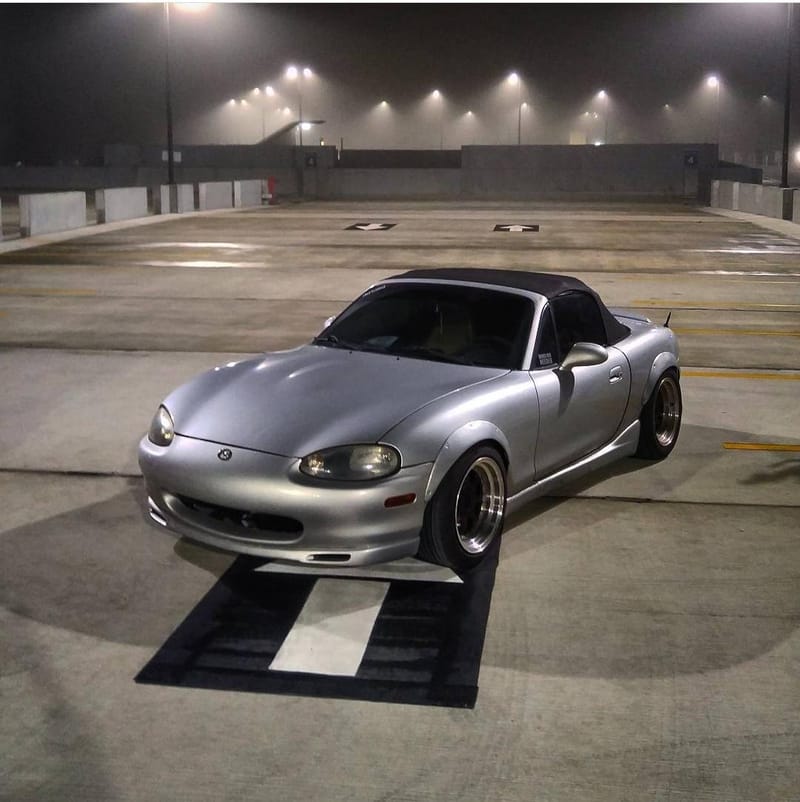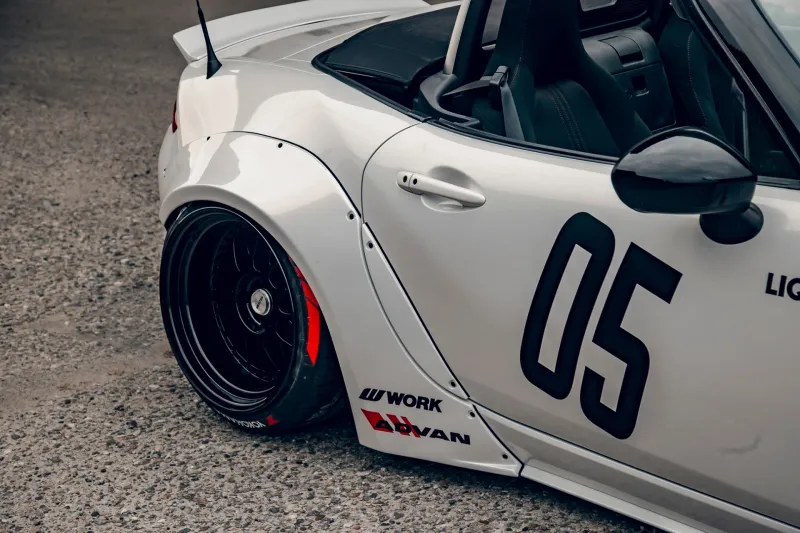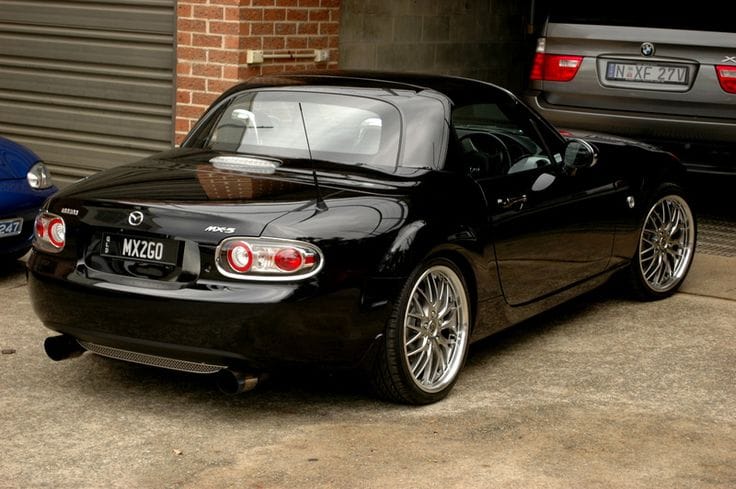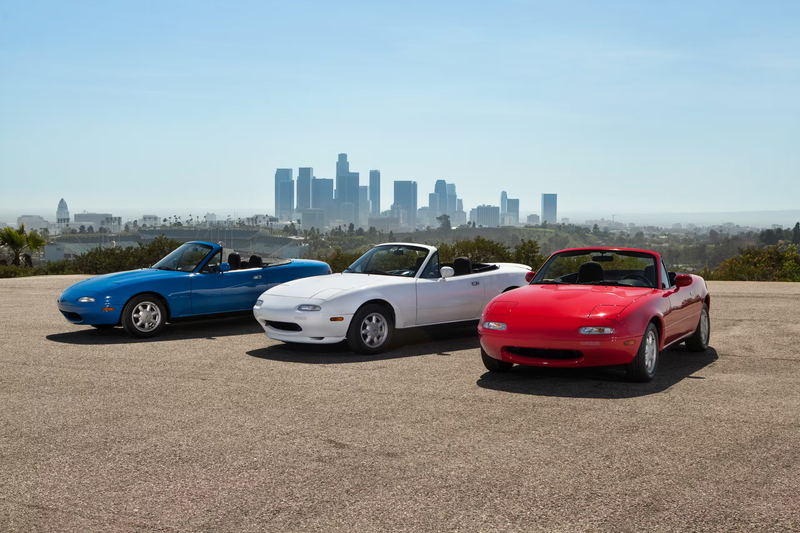NB Miata Trim Levels Guide (1999–2005)
The NB Miata (1999–2005) splits into NB1 (’99–’00) and NB2 (’01–’05). Early cars made 140 hp, while NB2s gained VVT for ~142 hp plus updates like projector headlights, a glass rear window, and a nicer interior. All non-turbo models use a 1.8L four-cylinder;
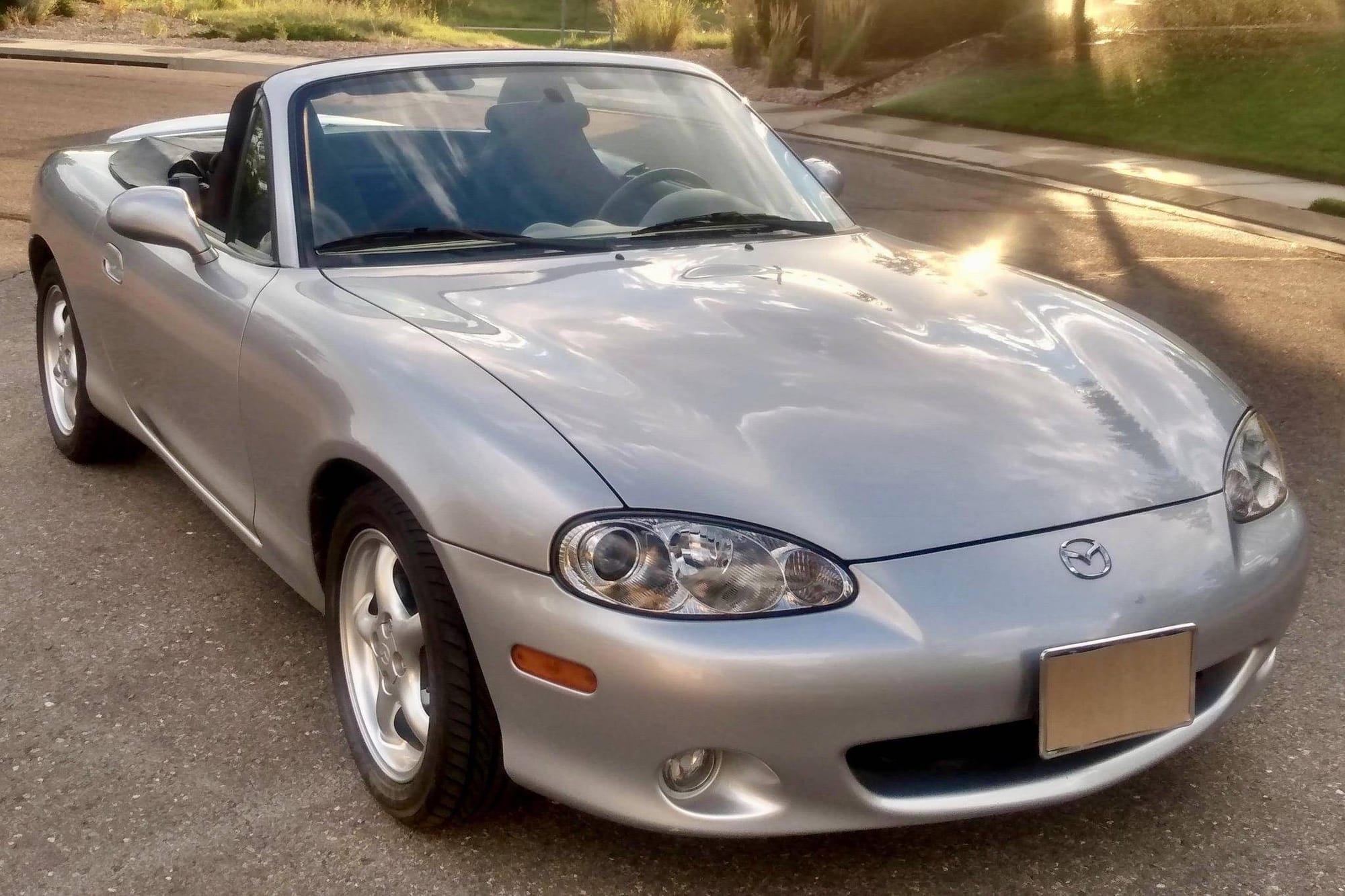
The NB generation splits into two phases: NB1 for 1999–2000 and NB2 for 2001–2005. The NB2 facelift brought projector low-beams, lightly revised taillights, a nicer interior, and a heated glass rear window that’s a real quality-of-life upgrade. Power nudged up thanks to variable valve timing: 140 hp in 1999–2000, then about 142 hp from 2001 onward. Every non-turbo NB runs the 1.8-liter inline-four; the outlier is the 2004–2005 Mazdaspeed MX-5 with a factory turbo, rated at 178 hp and 166 lb-ft. A 5-speed manual is standard across the run, while a 6-speed first appears on the 1999 10th Anniversary Edition and then becomes standard or optional on upper trims and packages after that.
Year-by-year trims and packages (U.S.)

1999 (launch NB1)
You get a Base model with a 5-speed and an optional 4-speed automatic. The big deal is how the options were bundled: Touring, Popular Equipment Package, Leather, and Sport packages, with names that sometimes vary by brochure. The Popular Equipment Package on manuals is the sleeper because it adds a Torsen LSD along with convenience goodies like cruise, power bits, and the windblocker. Power is 140 hp. Collectors have a clear target this year: the 10th Anniversary Edition in Sapphire Blue, which brings a 6-speed, Bilstein dampers, a Torsen LSD, polished 15-inch wheels, and a unique blue/black interior.
Who it fits: value hunters do well with a Base or PEP-equipped car; collectors and spec-chasers love the 10AE for its drivetrain and suspension baked in from the factory.
2000 (NB1)
Mazda adds the LS trim, which leans more upscale with leather and a Bose system. The 2000 Special Edition goes full OE-plus luxury with Mahogany Mica paint, Nardi wood trim, a 6-speed, a Torsen LSD, polished wheels, and tan interior accents. It’s limited and it looks the part.
Who it fits: the LS is an easy cruiser with nice touches; the Special Edition is the showy collectible with the right mechanicals already included.
2001 (NB2 facelift)
This is the big refresh year: projector low-beams, updated tails, white-face gauges, a glass rear window, and the VVT engine at roughly 142 hp. Trims settle into Base and LS, plus a British Racing Green Special Edition with tan interior and Nardi accents. The must-know box to tick is the Suspension Package: Bilstein shocks, a front strut-tower brace, 16-inch wheels with 205/45 tires, larger front brakes, and a Torsen LSD on manual cars. On the LS, that package typically requires the 6-speed. If you want the best-driving NB2 straight off the lot, this is the configuration to hunt.
Who it fits: drivers who want an OEM-sweet handling setup with minimal modding later should target LS plus Suspension Package.

2002 (NB2)
Base and LS continue, and the Special Edition returns in two personalities: Titanium Gray with Saddle Brown or Blazing Yellow with black. These usually combine the 6-speed, a Torsen LSD, and upscale trim bits. For shoppers who specifically want a Torsen in an NB2, 2001–2002 are the last years before the diff change.
Who it fits: anyone wanting a fully optioned NB2 with a Torsen before 2003.
2003 (NB2)
Two mechanical headlines define 2003. First, the big brakes and 16-inch wheels become standard across the board. Second, naturally aspirated cars transition from the Torsen to the Tochigi-Fuji “Super LSD.” Mazda also runs two special flavors. The Shinsen Version sits between Base and LS as a style-and-convenience play with a gray-and-blue theme and a 5-speed. The Club Sport is the unicorn: roughly fifty units, built with SCCA in mind, stripped of power steering, air-conditioning, and ABS, but fitted with Bilsteins, a Torsen, and a 5-speed.
Who it fits: 2003 is perfect if you want the big brakes as standard. If you must have a Torsen, aim at a 2001–2002 package car, or locate the ultra-rare 2003 Club Sport.
2004–2005 (final NB2)
Base and LS continue with the VVT engine and standard big brakes. The headliner is the Mazdaspeed MX-5: factory turbo, 178 hp and 166 lb-ft, 6-speed, Bilstein dampers, stiffer springs and bars, 17-inch Racing Hart wheels, unique aero, and Bose audio. Crucially, the Mazdaspeed keeps a Torsen-type LSD even as the naturally aspirated cars of the same years use the Super LSD.
Who it fits: if you want OEM boost and the quickest NB, the Mazdaspeed is the one, keep it near stock for reliability or mod carefully.

Trims decoded in plain English
The Base trim sticks to cloth seats and the 5-speed, with a lighter overall feel. In 1999–2002 it keeps the smaller brakes; in 2003–2005 it automatically gets the big-brake setup. The LS is the nicer street spec with leather and Bose, and in 2001–2002 it can be paired with the Suspension Package for Bilsteins, 16s, bigger front brakes, and a Torsen on manuals. Special Editions from 2000–2002 layer on exclusive colors and materials and typically carry the 6-speed and Torsen, making them enjoyable to drive and appealing to collectors. The 2003 Shinsen Version is a mid-spec style package with a distinctive gray-and-blue theme and a 5-speed. The 2003 Club Sport is a lightweight, track-leaning configuration that sacrifices comforts for the right hardware. The 2004–2005 Mazdaspeed is the factory-turbo halo model with the most outright pace.
How to confirm the hardware on the car in front of you
Start with the brakes and wheels. If the car is a 2003–2005, it has the big brakes from the factory; if it’s a 2001–2002 with 16-inch wheels and noticeably larger front calipers and 10.6-inch rotors, it likely has the Suspension or Sport package. For the differential, 1999–2002 cars equipped with the Suspension/Sport packages, Special Editions, the 10th Anniversary Edition, or many LS models with a 6-speed will usually have a Torsen. In 2003–2005, most naturally aspirated cars have the Super LSD while the Mazdaspeed uses a Torsen-type. A quick driveway check helps: safely lift the rear, spin one wheel by hand, and watch the other, if it follows in the same direction, the car likely has an LSD, though it’s still smart to verify by package details or build documentation. Enthusiasts also peek at door-jamb option codes and look for a factory strut-tower brace and underbody bracing as supporting clues on package cars.
Which NB is right for you?
For a budget daily, the 2001–2002 Base is hard to beat because you get the NB2 updates, the glass rear window, and the VVT engine. If you stumble onto one with the Suspension Package, even better. For a weekend canyon carver that still feels OEM-tight, the 2001–2002 LS with the Suspension Package hits the sweet spot and takes light mods beautifully. If you’re track-curious or autocross-bound, 2003–2005 cars are convenient because the big brakes are standard and pads and rotors are easy to source; if you specifically want a Torsen, look to 2001–2002 package cars or the 2003 Club Sport. If you want the fastest factory NB, the 2004–2005 Mazdaspeed is your answer, with the caveat that it rewards careful, conservative tuning if you plan to modify.

